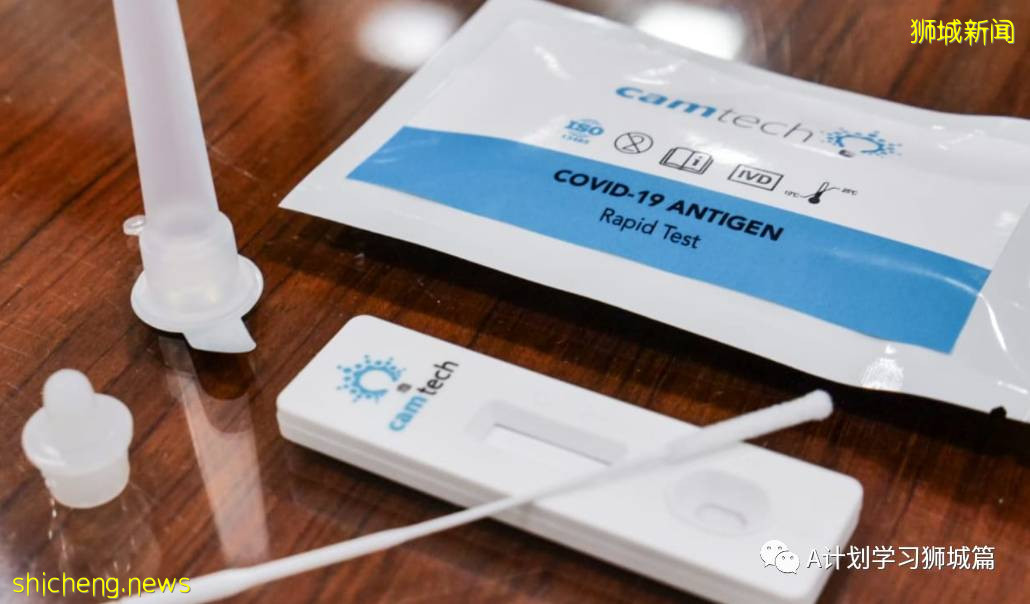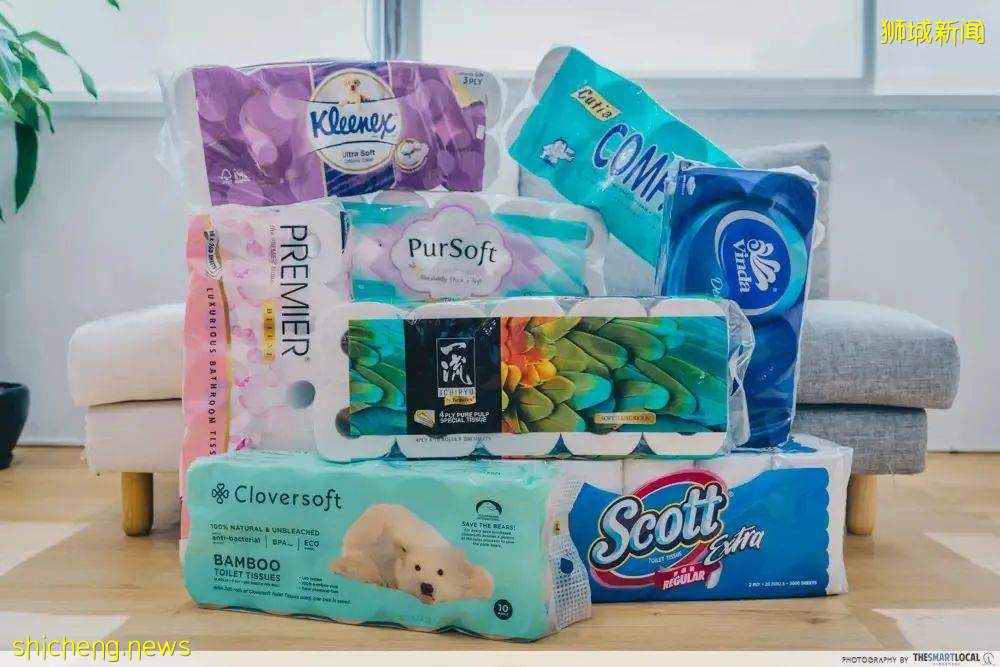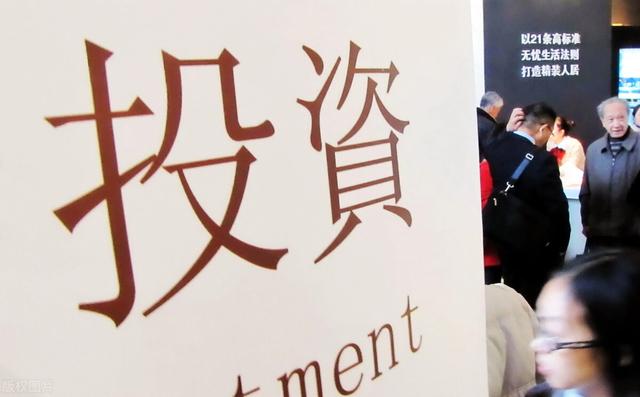李显龙总理全国讲话(中英文):新加坡冠病疫情以及如何迈向新常态
新加坡冠病疫情以及如何迈向新常态
李显龙总理全国讲话
2021年10月9日
新加坡进入冠病疫情稳定阶段已有两周,李显龙总理10月9日中午12时将发表全国讲话,内容包括冠病疫情以及如何迈向新常态。
这是李总理今年第二次就冠病疫情对全国讲话。他5月13日第一次发表全国讲话时,分享了政府计划如何在控制疫情的同时,让我国再次逐步解封,并勾勒接下来的新常态。
全文如下:
各位同胞:
过去的几个星期,本地的冠病病例大幅度增加,这难免让大家感到焦虑不安。许多国人觉得政府不断推出新的防疫政策,一些措施也一改再改,让他们无所适从。我理解大家的担忧和不满。有些人开始问:为了成为一个具有对抗冠病韧性的国家所做的部署,是不是出了问题?政府是不是改变主意了?我们还能按部就班开放我国社会吗?其他人也问到:为什么有那么多人染病?我们为什么没有再次实行阻断措施?这些都是合理的问题。
因此,我要亲自向大家说明:目前的局势以及出现了什么变化,我们在现阶段所采取抗疫战略,以及如何迈向新常态。
我要告诉大家我的看法和关注的事项。因为,只有万众一心,齐力抗疫,我们才能够克服困境,熬过接下来的几个月。
原本战略:“冠病清零”
去年,在疫情暴发初期,我们面对的是一种未知的疾病,全世界有关冠病的科学知识少之又少。由于新加坡曾经历沙斯疫情,因此这一次我们知道应该从哪里着手应对冠病疫情。随着我们对这个病毒有更多的认识,我们也相应调整了防疫战略。
我们原本所采取的战略是要铆足全力,帮助国人预防冠病。为了把病例维持最低水平,我们尽可能收紧安全管理措施。我们认为这是最有效的方法,能够把重症和死亡病例减到最少。
当时,采取“冠病清零”战略是正确的,因为大家都还没有接种疫苗,国人对冠病完全没有免疫力,如果感染冠病,后果将非常严重。当时,病毒的传染性也没有那么强,所以我们的防疫措施能够有效地阻断病毒的传播。我们的战略奏效了,我们没有像许多国家一样,有很多的死亡病例,我国是全球冠病死亡率最低的国家之一。
同时,我们也未雨绸缪,预先采购疫苗。在对抗疫情方面,疫苗起了非常关键的作用,疫苗为大家提供了一层保护。我们所推出的全国疫苗接种计划进行得非常成功,非常感谢国人对政府的信任,并全力配合,使我国成为全球疫苗接种率最高的国家之一,接种率近85%,这大大加强了我们对冠病的抵抗能力。我们的数据跟世界各地的数据都清楚显示,接种疫苗能显著降低您染病后患上重症的风险。绝大多数的本土病例(超过98%)没有或只出现轻微症状,只有2%或更少的病人患上重症。这当中,只有0.2%病逝或需要在加护病房接受治疗,换句话说,每2000位病患当中,只有两位。其他重症病患只需要输氧几天。也就是说,打了疫苗,冠病对大部分的人来说已不再是一种危险的疾病。
情况已出现变化
不过, 德尔塔变种病毒的出现让情况出现变化。德尔塔变种病毒传染性强,并且已经在全球散播开来。即便我国让所有人都完成疫苗接种,我们也不可能通过锁国和安全管理措施抵御这个变种病毒,因为它的传染性太强了。
即便我们能通过严紧的防疫措施让冠病病例有所下降,但是一旦我们放宽限制,病毒很快又会迅速地传播开来,新加坡的情况尤其如此。由于我们采取清零的抗疫战略,因此大多数的国人仍未接触到冠病病毒,我们大部分人从未染上冠病,又或者如医生所说的,我们没有得过冠病,所以就没有抗体。因此,我们的人体自然免疫力不高。即使我们已经接种了疫苗,也还会面对一些染病的风险。所以我们要有心理准备,接下来的一段时间,还是会看到许多新病例。
然而 ,我们不可能无限期地封城和关闭边境,这是不可行的,也要付出很高的代价,我们将无法恢复日常的生活,进行社交活动,开放边境以振兴经济。我们每一次收紧防疫措施,企业的运作和生意就会受到更大的冲击,工友会失去工作,小孩无法过正常、完整的童年和学校生活,一些国人和他们的家人也会分开得更久,尤其是那些有亲人身在国外的家庭,还有一些大家庭也一直无法团聚。这种种情况不但给人们带来心理和情感压力,也让人感到精神疲惫,这影响了国人以及其他民众,包括客工。
所以,我们几个月前就认定清零战略已不可行。所以,我们改变了战略,过渡到“与冠病共存”。
与冠病共存
不过, 整个过程并非一帆风顺。在8月份,当我们取得80%的接种率时,我们就结束了高警戒解封阶段。我们预计病例会上升,因为更多人恢复了各种活动包括社交聚会。由于德尔塔病毒株的传染性非常强,病例的增幅比我们所预期的高出了许多。
刚开始, 我国的医疗体系目前还是能够应付。不过,我们担心医疗体系将承受巨大压力,而事实也正是如此。我们的医护人员也面对同样的情况。而随着病例大幅度增加 ,重症病例也会相应增加。当我们出现多病例时,即使只有2%的病例需要住院或在加护病房治疗,这些重症人数还是相当可观的。在这种情况下,我国的医疗体系很快就会难以负荷。
这就是为什么上个月,我们收紧了限制。这么做是为了减缓病例的增幅,让医护人员有喘息的机会,让医疗体系能够稳定下来。我们也趁这个时候扩充医疗设施,改善照顾病患的模式。这样,我们才能更好地辨别哪些是可以在家康复的轻症患者,以及确保把医疗资源用来照顾那些重症患者。
接下来的计划
我国必须继续采取“与冠病共存”的战略,那现在,我们应该采取哪些策略?
首先,我们必须调整心态,这是最重要的一步。我们应该对冠病敬而远之,但我们不能对它感到恐惧而无所适从。我们应该尽量如常生活,同时采取必要的预防措施并遵守安全管理条例。如今,大多数国人都已接种了冠病疫苗,我们应该开始把冠病当作是一种可医治的轻微疾病,尤其是对年轻人更是如此,即便是对那些不太年轻、但已接种疫苗的人也是如此。冠病主要会对年长人士造成威胁,包括60岁及以上、还没有接种疫苗的年长者,以及80岁及以上已经接种的老人家。因此,对98%的人来说,如果感染冠病,可以在家休养直到康复,就像我们患上流感时,在家养病一样。
这就是为什么我们正改变做法,着重通过居家康复模式来照顾患者。居家康复将是冠病患者的既定护理模式,患者可以在熟悉的家里休养,没有入住护理设施的压力和麻烦。如果大多数冠病患者能在家休养,这将大大减轻我国医院的负荷以及医护人员的压力。这一来,我们就能腾出更多病床照顾可能会得重症的冠病患者,尤其是年长者。当然,如果家中有成员属于高风险群体,您也可以导到隔离设施休养。我知道很多人对居家康复计划仍存有疑虑并感到担忧,人们惧怕冠病,他们担心在居家康复期间,会威胁到家人的健康。患者也担心在家中是否能获得足够的照顾和支援,尤其是当他们的病情恶化时。我能理解这些顾虑。我向各位保证,所有的居家康复患者,在家休养时将能获得所需的照顾和支援。我们之前在进行这项计划时,的确有不足的地方,但我们已经努力改进,把工作做好。如果您在家休养期间,任何时候需要住院或入住冠病治疗设施,我们会做出有关安排。
如今冠病是个可控制的疾病,接下来我们将大大简化医疗方案,不再有复杂的一道道程序,人们必须清楚知道,如果冠病检测结果呈阳性,或者您曾接触冠病患者,应该怎么做?
人们必须知道自己能做些什么,每个人都必须负起个人和社会责任。例如:在必要时自行检测;一旦检测结果呈阳性,立刻自我隔离,以及在出现冠病症状时,尽快看医生。知道怎么做的话,我们就不再会觉得冠病是一个恐怖的疾病。让我们各尽所能保护每一个人,尤其是面对高风险人士的安全。
让大家最担忧的是我们的年长者,尤其是那些还未接种疫苗的年长人士。到目前为止,我们仍能够把死亡率保持在较低的水平,但让人难过的是,我国目前已有142人因冠病而逝世,而他们几乎都是患有其他疾病的年长者,他们是住在我们社区里,经常会碰到的60、70以及80岁的“安哥、安娣”。病逝的患者当中,未接种年长人士也特别多,虽然他们只占人口的1.5%,但他们却占了住进加护病房或因冠病去世病例的三分之二,其余的三分之一是已接种的年长者。我们为每一个逝者感到哀痛和惋惜。在此,我向家属表示最深的慰问。
随着有越来越多人染病,我们大部分人已接触过确诊病患,或认识接触过确诊病患的人。相信每个人总有一天,也会染病,所有年长者也无法幸免,他们面临的风险,真实存在。如我之前所说过,冠病主要会危害年长者,这包括未接种疫苗的60岁以上人士,和接种疫苗的80岁人士。
当病例增加,年长患者也会增加,假设每天有5000起新增病例,那么预计就有约100人会病重。这不是一个小数目。
我们的医生护士尽全力治疗和照顾每个病患,但不幸的是,就算他们尽再大的努力,也不能确保每一个重症患者都能战胜病毒,一些终究会病逝,就像感染肺炎一样。我国每年有超过4000人死于肺炎,他们大多数是年长者,生前也都患有其他疾病。在接下来的几个星期和几个月,我们很可能持续看到更多冠病患者病逝的情况。所以,我们有必要减缓冠病病例增加的速度。
同时,在与冠病共存的过程中,我们还必须重新同世界接轨。我们尤其需要,继续安全地重开边境。这是因为,以新加坡为基地的企业和投资者,还需要经营他们在整个区域的业务和投资,他们的员工需要到国外出差。要到海外学习和实习的学生,也不能每次回国都履行居家通知。许多人也想偶尔和亲友出国度假。
我们已经与德国和文莱推行疫苗接种者旅游走廊计划。这些试行计划证明,已接种疫苗的人可以在安全的情况下出国,而通过这个方式入境的冠病病例也很少。我们还会和更多国家,尤其是那些疫情稳定的国家合作推行这项计划。这能让我国保住区域枢纽的地位,并继续与全球供应连结轨。
未来几个月
未来几个月会是艰难的,我预计在接下来几周,本地的每日病例仍会持续增加,我们的医疗体系将继续承受相当大的负担。我们可以减缓德尔塔病毒的传播速度,但无法将它根除。
但总有一天,患病人数会趋向稳定,并开始下降。我们不确定这一天什么时候到来,但以其他国家的经历来看,希望我国的情况能在一个多月内好转。随着医疗体系所承受的压力减轻,我们就能放宽限制,并脱离稳定疫情阶段,但我们在放宽措施时也必须非常谨慎小心,以免出现新一波疫情,让医疗体系不胜负荷。
要安然渡过这次疫情,我们就必须不惜一切代价,保护好我们的医疗体系和医护人员。在此,我想告诉我们的医护人员,我知道你们都在承受巨大的压力,肩负重担。你们拼尽全力奋斗了那么久,而此刻我们正在经历这场抗疫之战的最艰难阶段,但这只是暂时的。只要我们能挺过此次疫情高峰,情况就应该有所好转。在这期间,我们会竭尽所能保护所有医护人员和整个医疗体系。因为如果我们不保护好你们,你们又如何能保护我们?我谨代表全体新加坡人感谢你们的付出,我们与你们并肩作战,并全力支持你们!
我也要对全体国人说,我们同样需要您的支持。我们的医院和医护人员是对抗冠病的最后一道防线,请大家一起保护他们。希望我们每个人能携手筑起防疫的第一道防线,继续遵守安全管理措施,尽量减少社交活动,以缓和病毒传播的速度。如果您还没接种疫苗,请尽快去接种。这会减低您患上重症的风险。请在轮到您的时候,接种疫苗追加剂。定期自行检测,以避免无意间感染他人,尤其是身边的年长者。如果您感染冠病,可以的话就在家里养病,直到康复为止,除非您患有重病或家中有属于高风险群体的亲人。如果您只出现轻微症状,请不要立刻赶往医院的急诊部门求医,请把宝贵的医疗资源留给最需要紧急治疗的病患,这包括病情严重的冠病病患和患有其他重症的入院者。
前方的道路
这场同冠病对抗的战斗很漫长,也还没有结束,但我们的处境已比一年前,甚至是半年前好很多。虽然我们有时并不那么觉得,但我们确实已在通往新常态的道路上稳步前进,逐渐适应与冠病共存的生活。
即便这一波疫情稳定下来,我们日后或许还会面对一波又一波的新疫情,特别是当有新变种毒株出现。
我们要如何知道 我国已经进入新常态?所谓的新常态,就是我们在放宽限制后,不会看到病例激增。到时,我们只需实施一些较宽松的安全管理措施,新增病例也可维持在每天数百起的平稳状态,而医院也能恢复正常运作。我们需要至少三个月,甚至长达六个月,才能达到同样的状态。冠病局势的演变已经多次让我们始料未及,也可能再次让我们无法意料。但我有信心,我们一定能进入新常态。我们会步步为营,谨慎前进,不让任何人孤军作战。在这个过程中,我们会尽可能减少死亡人数。
结语
只要大家全力配合,我们就能挺过最艰难的时刻,希望这一天早日到来。我们有足够的资源、决心和勇气共同克服这次的危机。疫情让我们看到了新加坡人最美好的一面。我们在困境中保持团结,以坚定的意志应对挑战。让我们再接再厉,继续携手同心打完这场仗,最终成为具冠病韧性的社会,进入新常态。
谢谢!
英文全文如下:
My fellow Singaporeans:
Local COVID-19 cases have increased sharply over the past few weeks. All of you are understandably anxious. Many have found it difficult to keep up with new policies and changes to measures. I understand your concerns and frustrations. Some ask: What happened to our plans to build a COVID-resilient nation? Has the Government changed its mind? Are we on track to reopening our society? Yet, others ask: Why are there so many cases? Should we not be fully locking down now? These are all valid questions.
Hence I have decided to speak directly to you, to explain: Our current situation and what has changed, our strategy for this phase of the pandemic, and our path forward to a new normal.
I want to share my thoughts and concerns with you, because unity of purpose and hearts is crucial to get us through the next few months.
Our Original Approach – “Zero COVID”
Last year, at the start of the outbreak, we were dealing with an unknown disease. Globally, there was little scientific knowledge about COVID-19. Our own experience from SARS gave us some idea where to start. As we learnt more about the virus, we adjusted our strategy to the evolving situation.
Our original approach was to do our utmost to prevent Singaporeans from being exposed to COVID-19. We tightened Safe Management Measures (SMM) as much as necessary, to bring cases down to a very low level. We judged this the best way to minimise serious illness and deaths.
“Zero COVID” was the right strategy at that time. Our population was not yet vaccinated. People had little or no immunity against COVID-19. The consequences of catching the virus were serious. But because the virus was not so infectious then, our measures could work to break the chain of transmission. The strategy succeeded. We avoided the huge loss of lives that many countries saw. We have one of the lowest COVID-19 death rates in the world.
At the same time, we planned ahead and secured vaccine supplies. Vaccines were a game changer. A safety vest for each of us in this pandemic. Our national programme to vaccinate everybody has been very successful. Thanks to your trust and cooperation, we now have one of the highest vaccination rates in the world – almost 85%. This has greatly enhanced our protection against the virus. Our data, as well as data from around the world, clearly show that vaccination sharply reduces the risk of serious illness. The vast majority of local cases (more than 98%) have mild or no symptoms. Only 2% or less developed more serious illness. Of these, 0.2% died or needed ICU treatment – just two out of every one thousand cases. The rest have needed oxygen supplementation for a few days. In other words, with vaccination, COVID-19 is no longer a dangerous disease for most of us.
A Changed Situation
But the emergence of the Delta variant has put us in a changed situation.
The Delta variant is highly infectious, and has spread all over the world. Even with the whole population vaccinated, we still will not be able to stamp it out through lockdowns and SMMs. Almost every country has accepted this reality.
Furthermore, even if we manage to keep COVID-19 cases down through stringent SMMs, the virus will spread swiftly again as soon as we ease up. This is especially true in Singapore, precisely because of our “Zero COVID” strategy. The majority of us have never experienced an infection. Or as doctors say, we are COVID-naïve. As a result, our natural (population) immunity is low. Even if we have been vaccinated, we are still at some risk of getting infected. This is why we must be prepared to see quite many COVID-19 cases for some time to come.
Yet Singapore cannot stay locked down and closed off indefinitely. It would not work, and it would be very costly. We would be unable to resume our lives, participate in social activities, open our borders, and revive our economy. Each time we tighten up. Businesses are further disrupted. Workers lose jobs. Children are deprived of a proper childhood and school life. Families are separated for even longer. Especially families with loved ones overseas and extended families who have not been able to come together. All these cause psychological and emotional strain, and mental fatigue. For Singaporeans and for everyone else here with us, including our migrant workers.
Therefore, we concluded a few months ago that a “Zero COVID” strategy was no longer feasible. So we changed strategy, to “Living with COVID-19”.
Living with COVID-19
“Living with COVID-19” has not been a smooth and easy journey. In August, after we reached 80% vaccinations, we eased up the Heightened Alert. We expected cases to go up, as more people resumed activities and interacted with one another, but the numbers went up more sharply than we had anticipated, because the Delta variant was so infectious.
Initially, our healthcare system was still able to cope. But we worried that it would come under significant strain, and it has. So have our medical personnel. As cases grow exponentially, the number of serious cases will also grow in step. And when the number of cases grows very large, even 2% of a very large number will translate to many patients needing hospital and ICU beds. Our healthcare system would rapidly be overwhelmed.
That is why last month we tightened up our restrictions. It was to slow down the growth in cases, so that we can ease the burden on our healthcare workers and stabilise our healthcare system. We are using this time to further expand healthcare capacity and strengthen our case management. So that we can better identify COVID-19 patients with mild symptoms to recover at home. And make sure we can care properly for those who fall seriously ill. As well as continue to attend to the many non-COVID-19 patients who also have urgent medical needs.
The Next Steps
We must press on with our strategy of “Living with COVID-19”. What next steps must we now take?
To start with, and most fundamentally, we¬ need to update our mindsets. We should respect COVID-19, but we must not be paralysed by fear. Let us go about our daily activities as normally as possible, taking necessary precautions and complying with SMMs. With vaccinations, COVID-19 has become a treatable, mild disease for most of us. This is especially so if you are young. Or even if you are not so young but fully vaccinated. The threat of COVID-19 is now mainly to seniors: 60 and above if you are not vaccinated, or 80 and above even if you are vaccinated. So for 98% of us, if we catch COVID-19, we can recover by ourselves at home, just as we would if we had the flu.
That is why we are shifting to relying heavily on Home Recovery. It will be the norm for COVID-19 cases. You can get well in a familiar home setting, without the stress and bother of admitting yourself into a care facility. If most of us can recover at home, it will greatly ease the strain on our hospitals, doctors and nurses. It will free up badly needed beds for COVID-19 patients who are at high risk of becoming seriously ill, especially the elderly. Of course, if you have vulnerable family members at home, you can go to an isolation facility to recover. I know many people still have concerns and anxieties about Home Recovery. They are fearful of the disease itself. They fret about the risk to the rest of their household. They also worry whether they will receive adequate care and support at home, should they get worse. I understand your anxieties. Let me assure everyone on Home Recovery that you will get the care and support you need throughout your recovery journey. Earlier, our service delivery fell short. But we have worked hard to fix this, and put things right. If at any point you need to be admitted to hospital or a COVID-19 treatment facility, we will get you there.
Next, since COVID-19 has become a manageable disease, we should now drastically simplify our health protocols. No more complicated flow charts. People must be clear what to do if they test positive, or if they come into contact with someone who is infected.
We also need to know what we can do ourselves. Each one of us needs to take personal and social responsibility. Test ourselves as necessary. Self-isolate if we test positive. Consult a doctor if we have symptoms. Knowing what to do, we will no longer find COVID-19 such a scary disease. Let’s all do our part to keep everyone safe, in particular the vulnerable ones among us.
The group that worries me most is the elderly, especially those who are not yet vaccinated. We have thus far managed to keep our fatalities very low. But sadly, even that has still meant 142 deaths so far. Nearly all were elderly, and with pre-existing medical conditions. They were uncles and aunties in their 60s, 70s and 80s, living in our community. A disproportionate number are unvaccinated seniors. They account for barely 1.5% of the population but they make up two-thirds of those who needed ICU care or died. The remaining one-third were vaccinated seniors. We feel every single loss keenly. My deepest sympathies and condolences to all the families.
With more COVID-19 cases, already most of us have either met someone who has gotten COVID-19, or know someone who does. Sooner or later, every one of us will meet the virus. This means all the elderly will meet the virus too And for them, the risk is very real. As I said earlier, COVID-19 is now mainly a danger to seniors: 60 and above if you are not vaccinated, or 80 and above even if you are vaccinated.
As cases grow, so will the number of elderly cases. If we reach 5,000 COVID-19 cases a day, every day we can expect around 100 to become seriously ill – not a small number.
Our doctors and nurses do their best for every patient. Unfortunately, despite their best efforts, not every seriously ill patient will make it through. Sadly, quite a few will succumb. Just like with pneumonia. Every year more than 4,000 people die of pneumonia in Singapore, mostly elderly and with other underlying illnesses. Over the next few weeks and months, we will likely see the number of COVID-19 related deaths continue to go up.
There are several things we can do, and the elderly can do themselves, to protect them and reduce the numbers falling seriously ill. For the unvaccinated elderly, we will continue trying hard to persuade and vaccinate you. If you are above 60 and not yet vaccinated, you are at very high risk – please get your jabs now! For the elderly who are already vaccinated, please get booster shots to strengthen your immunity. Vaccination has already lowered your risk substantially, but your risk is still much higher than someone younger. A booster shot will reduce your risk further. If you are a vaccinated senior, taking the booster reduces your risk of severe infection by more than 10 times. Or to put it in another way, to the virus, the booster shot makes a vaccinated 80-year old look like a much younger vaccinated 50-plus year old! This is why I am happy to see many seniors walking in for boosters as soon as you are eligible, even before receiving your SMS invitations. Seniors themselves should take extra precautions. By all means go out to exercise and get fresh air but please cut back on makan, kopi and beer sessions with your friends and kakis. This will lower your exposure to the virus. We want you to stay well! Younger people living with seniors can also help to protect them. For instance, you can cut down your own social interactions for now. And test yourself regularly to check that you are not bringing the virus home.
Another group that parents are concerned about is children under 12. Vaccines have not yet been approved for such young children. As cases grow, parents are understandably anxious about their children catching the virus. Though the data shows that children with COVID-19 seldom get seriously ill, parents are still worried. We are closely tracking the progress of vaccine trials on children in the US. We will start vaccinating children as soon as vaccines are approved for them, and our experts are satisfied that they are safe. This will likely be early next year.
Meanwhile, we will build up our healthcare facilities to be able to provide those seriously ill the medical care they need, especially oxygen support and ICU care. However, there is a limit to how much we can expand. We can build new care facilities and purchase new equipment, and we are doing so. But we cannot easily find more and more doctors and nurses to staff them. That is why we have to moderate the surge in COVID-19 cases.
At the same time, as part of living with COVID-19, we must also connect ourselves back to the world. In particular, we must continue to re-open our borders safely. Companies and investors need to carry out regional and global business from Singapore. People working for them need to travel to earn a living. Students need to go on overseas attachments and internships without having to SHN each time. Families and friends will once in a while want to spend time together, overseas.
We have started Vaccinated Travel Lanes with Germany and Brunei, and just announced another with South Korea. These pilot projects have shown it is possible for vaccinated persons to travel safely, while letting in very few COVID-19 positive cases. We are implementing more such arrangements, especially with countries whose COVID-19 situations are stable. This will keep us connected to global supply chains and help to preserve Singapore’s hub status .
The Next Few Months
The next few months will be trying. I expect daily cases to continue rising for some weeks. Our healthcare system will still be under pressure. We can slow, but we cannot stop the Delta variant.
At some point, the surge will level off, and cases will start to decline. We don’t know exactly when, but from the experience of other countries, hopefully within a month or so. As pressure eases off on the healthcare system, we can relax our restrictions. But we will have to do so cautiously, to avoid starting a new wave again.
We must protect our healthcare system and workers at all costs, in order to get through the pandemic safely. Let me say this to all our healthcare workers. I know the enormous stress you are under, and the heavy load that you bear. You have been fighting so hard, for so long. Now we are going through perhaps the most difficult phase of our journey. But it will not last indefinitely. After this surge peaks, things should get better. We are doing all we can to protect you and the healthcare system as we go through this wave. If we don’t protect you, you can’t protect us. On behalf of all Singaporeans, I thank you all. We are with you, and will give you our fullest support.
And to all Singaporeans, we need your support too. Hospitals and healthcare workers are our last line of defence. Help us to protect them. Let each of us be the first line of defence. Continue to abide by prevailing SMMs, and cut back on social activities, to slow the spread of the virus. Get vaccinated if you have not already done so – this will minimise your chances of falling seriously ill and go for your booster shot when your turn comes. Self-test regularly, to avoid infecting others, especially seniors around you. If you are infected, take up Home Recovery, unless you have serious illness, or vulnerable family members. Please don’t rush to the A&E with mild symptoms. Let us reserve hospital capacity for those who need it most – serious COVID-19 cases as well as others with serious illnesses.
The Path Beyond
It has been a long campaign against COVID-19. The war continues but we are in a much better position now, than a year or even six months ago. Sometimes it may not feel like it, but we are making steady progress towards the new normal.
After this surge stabilises, we may still see future surges, especially if new variants emerge. We may have to tap on the brakes if cases again grow too fast, to protect our healthcare system and healthcare workers. But we will be better able to cope with future surges. Our capacity and processes continue to improve. As more people are exposed to the virus and recover, our immunity levels will increase. COVID-19 will spread less quickly among us. With each passing day, we are getting stronger and more resilient. And we are more ready to live with the virus in our midst.
How will we know when we have arrived at the new normal? It will be when we can ease off restrictions, have just light SMMs in place, and cases remain stable – perhaps hundreds a day, but not growing. When our hospitals can go back to business as usual. When we can resume doing the things we used to do, and see crowds again without getting worried or feeling strange. A few countries have reached this state, e.g. in Europe but they have paid for it dearly, losing many lives along the way. It will take us at least three months, and perhaps as long as six months to get to this new normal. COVID-19 has surprised us many times before, and may yet surprise us again. But get there, we will. In a careful and safe manner, with no one left behind to fend for themselves and with as few casualties as possible along the way.
Conclusion
With everyone’s cooperation, we will put the pandemic behind us, hopefully soon. We have the resources, the determination, and the courage to get through this crisis. The pandemic has brought out the best in Singaporeans. We have stayed united and resolute despite the difficulties. Let us keep that up, and continue working together to complete the journey towards COVID-resilience.
Thank you.





















评论